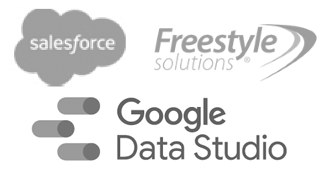Debunking myths about junk mail and CRM technology

“How many of you have an absolute visceral reaction to getting what you might call ‘junk mail’?”
This is the first question I ask students in my class in the graduate marketing program at the Carey School of Business at Johns Hopkins University, where I have been fortunate to spend the past 18 years as Adjunct Professor. My classes are made of students earning their MBAs, most of whom already have a marketing degree.
Usually fully half or more of these fresh-faced students will raise their hands. For them, this moment begins the journey into Direct Marketing—a topic on which they have opinions, but their education is often a blank slate. And, they may very well reflect not only a consumer viewpoint, but that of many marketers, too.
That said, if you’ll bear with me, I’d like to offer a differing perspective. Consider the following topics, and typical student reactions:
Myth #1: Direct mail is a waste.
Students, as you might expect, cite the same objections that appear in mass media. Their reactions are similar to those reported in research by Marketing Sherpa in May 2017:
“[C]onsumers called out the negative environmental consequences of direct mail in the ‘other reasons’ field. Comments like ‘waste of paper and trees!’ ‘not good for the environment,’ ‘not green’ and ‘not eco-friendly.'”
Follow-up: Students actually do understand that marketers need to be, at their core, business focused. From this, they agree that a business cannot afford to market in a scattershot method—but must achieve the highest ROI for their investment. The natural extension of this concept is to explain “targeting”: how it works, which metrics are most useful (specifically RFM analysis), and most importantly, to know “what works.”
At some point in the “what works” discussion, I share the famous quote from John Wanamaker (1838-1922), the department store magnate from Philadelphia: “Half the money I spend on advertising is wasted; the trouble is I don’t know which half.”
This story resonates with students—they get it. Most of them have encountered the 80/20 rule (aka Pareto’s Law: the vital few and the trivial many) at some time in their journey. Targeting with direct mail fits into this narrative. Specifically, to measure success, direct marketers are trained to use A/B split testing. By holding back a test group and comparing results to the mailed portion, the “lift” of the mailed portion can be established. Students see this as similar to the “controlled experiments” they did in science class in their younger days.
The Wanamaker quote reveals how important storytelling is in any marketer’s education—and especially for students. Marketing success stories (and also stories of dramatic marketing failures) drawn from real-life experiences can illustrate more clearly what the content in a textbook cannot.
Myth #2: CRM is solely the domain of technology.
Most students have heard of “CRM” or “Customer Relationship Management,” and, like many veterans, assume it means technology. In truth, this is a limited view because CRM is both a technology AND a philosophy of how to treat your customers.
To explain CRM philosophy, I encourage students to visualize a bullseye on a chart, putting the customer at the center of all operational functions. At this point in the student journey, I provide a bit of history to add clarity to the picture. For example:
 Back in the “old days,” before chain stores and supermarkets, the corner grocery store offered a simple model for customer relationship management:
Back in the “old days,” before chain stores and supermarkets, the corner grocery store offered a simple model for customer relationship management:
- Your corner grocer had a 360° view of his customers (and their families).
- Your grocer put the customer at the center of his operation. He greeted each one and thanked them upon purchase.
Your grocer knew:
- Customer demographics – family profile, age, budget, privacy issues
- Customer buying behavior – to recommend products
- Customer credit status – to avoid bad debt
- Product inventory levels – to avoid shortages
I point out the complete absence of technology in this scenario. Still, the grocer knew most everything about his customers. In the commercial world, a good example is the CRM philosophy of allowing customer to return online purchases at local store locations. The result might be messy for staff, but it’s convenient and a relief for the customer.
Follow-up: Sometimes, students completely miss the point of this discussion on CRM. For example, despite my emphasis (for eight weeks!) describing customer focus versus staff convenience, a student smiled throughout his final class presentation because he was so happy to describe how a CRM installation at his workplace was going to make his life so much easier. OUCH!
This student, like many marketers, had yet to realize that technology—while wonderful—is only a tool. Even artificial intelligence (AI) and all its applications cannot replace the importance of applying human intelligence to customer relationships. Many times, and especially for newbies, relying on basic principles of marketing, conducting research, applying analysis, and drawing straightforward conclusions are the path to success.
WiseGuys Marketing has helped direct marketers target their customers with the right offer at the right time—using RFM algorithms and data-driven CRM software. They specialize in working with small to mid-sized companies that are selling through a combination of websites, email, catalogs and retail stores and who want to increase the yield from their campaigns.
Bruce Gregoire is founder and CEO of WiseGuys Marketing, based in Falls Church, VA. In addition, Bruce is a guest speaker on CRM in the graduate marketing department of the Carey Business School, Johns Hopkins University. If you’d like to talk more about CRM or WiseGuys—or how WiseGuys can help your campaign staff boost their sales—Bruce can be reached at (703) 941-8109.









